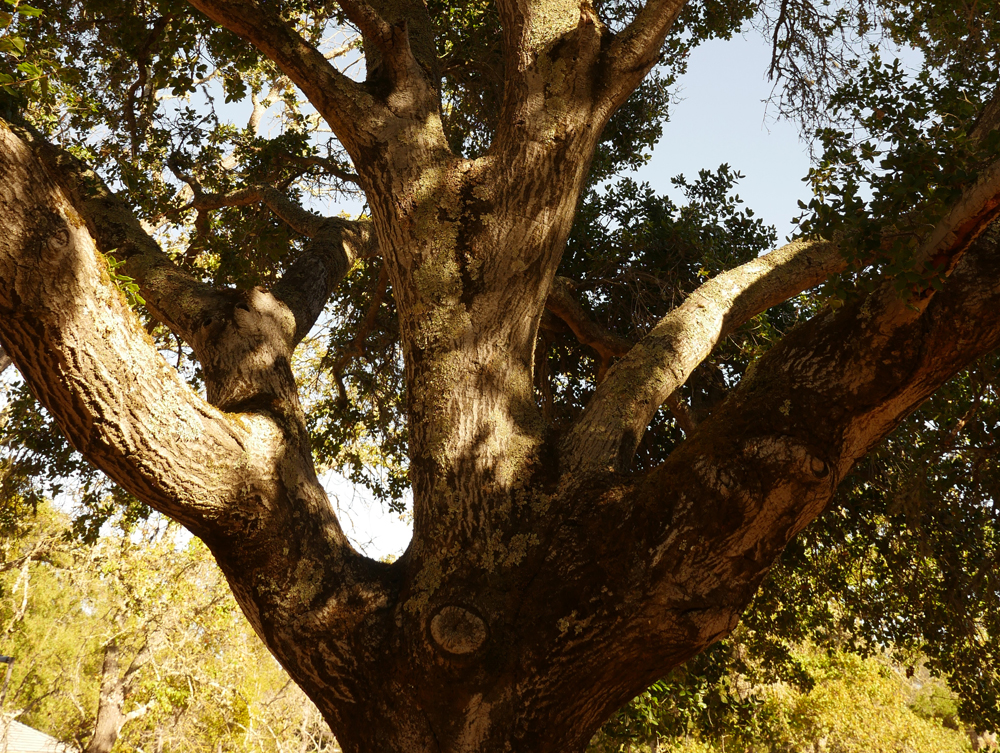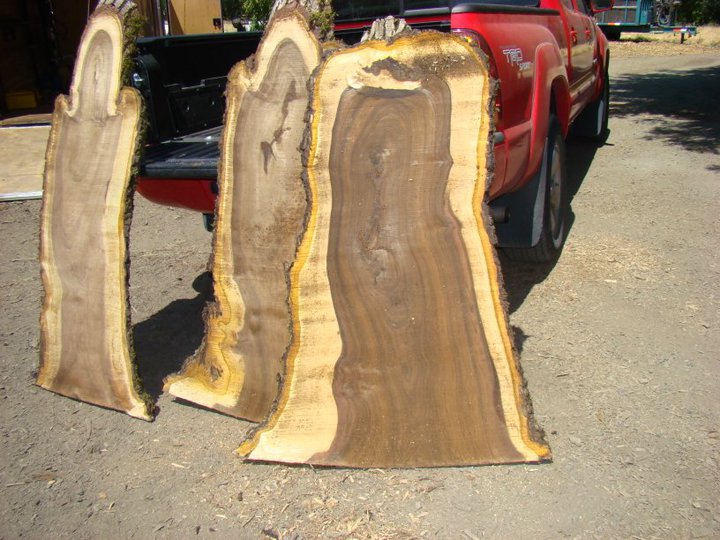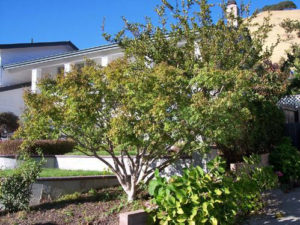
Many people don’t know that trees are vulnerable to sun damage. Photo: World Tree Service, Inc. ©2019
Before going outside on a sunny summer day, you probably apply sunscreen, put on sunglasses and take other measures to protect yourself from UV exposure. However, did you know the trees on your property may need similar protection? It’s a little known fact that, under certain circumstances, trees are vulnerable to sun damage. But what are these circumstances? And what kind of impact can sun damage have on a tree? Read on to learn more.
How can a tree get sunburned?
Like any living organism, trees have a certain tolerance for heat and UV exposure, which, if exceeded, can result in a stressed condition. Fortunately, trees have built-in sunblock in the form of bark, and their canopies also keep their trunks and branches shaded from sunlight. But when these protective components are undeveloped or removed, it can bring a risk of overexposure. Likewise, trees’ unique cellular composition and seasonal behaviors (such as winter dormancy) can affect their susceptibility to sun damage.
The principal danger that UV overexposure poses for a tree is gradual deterioration of its bark. When this protective layer is compromised, it can create a fissure that leaves the tree’s inner tissue exposed. As a result, the tree will be more susceptible to pests, pathogens and other sources of decay.

Since a tree’s inner tissue (known as heartwood) is technically dead, it doesn’t have the capacity to heal itself like the outer layers of tissue do. Photo: Pacific Tree Care ©2019
When are trees susceptible to sun damage?
Certain circumstances increase a tree’s susceptibility to sun damage. Here are some common causal scenarios:
Over-pruning
As mentioned above, a tree’s canopy provides shade that protects its trunk and limbs from the sun. If you prune a tree’s limbs back too far, you can expose areas of the trunk that haven’t seen sunlight in years. This sudden exposure can cause a healthy, mature tree to quickly become unhealthy, especially in areas where the bark is thin. That’s why, unless you know what you’re doing, it’s best to leave major pruning jobs to a professional tree service company.
Young trees
Because of their undeveloped bark and canopies, young trees are especially vulnerable to sun damage. Furthermore, since most nursery-bought transplants are grown under shade cloth, being planted in direct sunlight with no acclimatization period can put a young tree in a state of stress.
Non-native transplants
Transplants that aren’t well-suited for Northern California climate and soil conditions may have difficulty thriving and be at a higher risk of sun damage. Before purchasing a tree at a nursery, you should always do research to make sure it’s appropriate for the environment in which it’ll be planted.
Major landscape alterations

When landscape alterations expose a previously shaded tree to sunlight, it can put the tree in a state of stress. Photo: Artisan Tree Trimmers ©2019
When doing a landscape construction or remodeling project, it’s important to consider the after-effects of the changed conditions. For example, if you remove a row of tall shrubs that were shading a mature tree’s trunk from the sun, the sudden exposure can put that tree under stress and compromise its health. For this reason, when making substantial alterations to your yard or landscape, it’s wise to consult an ISA Certified arborist.
What is sunscald?
Believe it or not, tree sun damage doesn’t just occur during summer—it can also happen in winter. This particular kind of damage (known as sunscald) is caused by a combination of inordinate sun exposure and freezing nighttime temperatures. On an unseasonably warm winter day, sun exposure can cause a tree’s bark cells to awaken from their protective dormant state. Later, when the temperature drops below freezing at night, the tree is left susceptible to damage. If this sequence occurs repeatedly, it can result in permanent harm to the tree. Learn more about sunscald.
How to protect trees from sun damage
If you have trees on your property that are at risk of winter sunscald or summer sunburns, you’ll need to take steps to protect them. One common approach is to coat the trees’ trunks with light-colored paint. This won’t harm the tree, and it’ll provide a layer of protection from the sun. Just be sure to use a water-based paint and dilute it with water at a 1:1 ratio.
Of course, not everyone likes the look of painted tree trunks in their yard. If this is the case for you, another option is to cover your trees’ trunks in shade cloth; a plastic spiral wrap; or a thick, light-colored fabric. Whatever method you choose, this simple step will keep your trees’ trunks protected from sun damage during winter and summer.
Are you unsure whether a tree on your property is vulnerable to sun damage? Do you need help with pruning, bracing or removing a tree? Find a Diamond Certified tree service company in your area.
Learn more about tree sunburn causes and solutions
